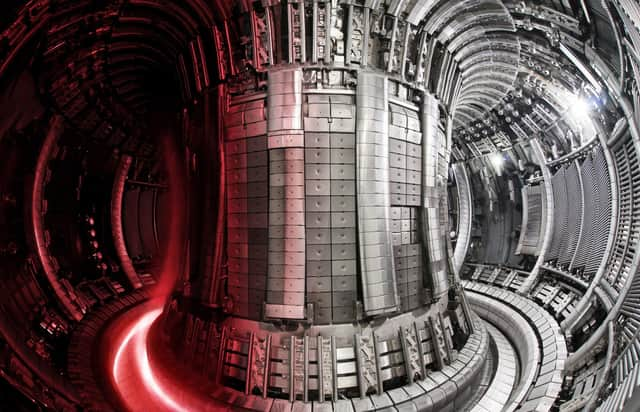Nuclear fusion breakthrough is a scientific marvel with huge promise – Scotsman comment


And, in a development that sparked global headlines, this tiny non-celestial body generated a world-record amount of energy from nuclear fusion.
It may have only been about enough to boil a kettle for half a day, but it has been hailed as a huge step towards realising the dream of almost limitless supplies of low-radiation and low-carbon electricity.
Advertisement
Hide AdAdvertisement
Hide AdAdmittedly, the amount of energy needed to achieve this breakthrough at the Joint European Torus laboratory in Oxfordshire was more than was actually generated by it.
However, the methods used suggest that scientists are on the right track and that, in perhaps ten, 20 or 30 years, commercial fusion reactors could start to become a reality.
Work will now continue at the ITER facility in France to build a much larger fusion reactor, one capable of at least breaking even in terms of energy in and energy out.
Regrettably, all this comes a little too late to provide a miracle cure for climate change, and the need to cut greenhouse gas emissions dramatically by switching to renewables, electric cars and low-carbon central heating remains.
For, as exciting and wonderful as all this really does sound, we are not there yet and cannot rely on something that does not actually exist in practical terms. To paraphrase the wisdom of one cynic, weary from too many supposed ‘breakthroughs’, “nuclear fusion is the technology of tomorrow – and always will be”.
That said, we cannot help but marvel at the extraordinary ability to harness the process that drives the sun and the heights to which science can soar.
A message from the Editor:
Thank you for reading this article. We're more reliant on your support than ever as the shift in consumer habits brought about by coronavirus impacts our advertisers.
If you haven't already, please consider supporting our trusted, fact-checked journalism by taking out a digital subscription.
Comments
Want to join the conversation? Please or to comment on this article.
